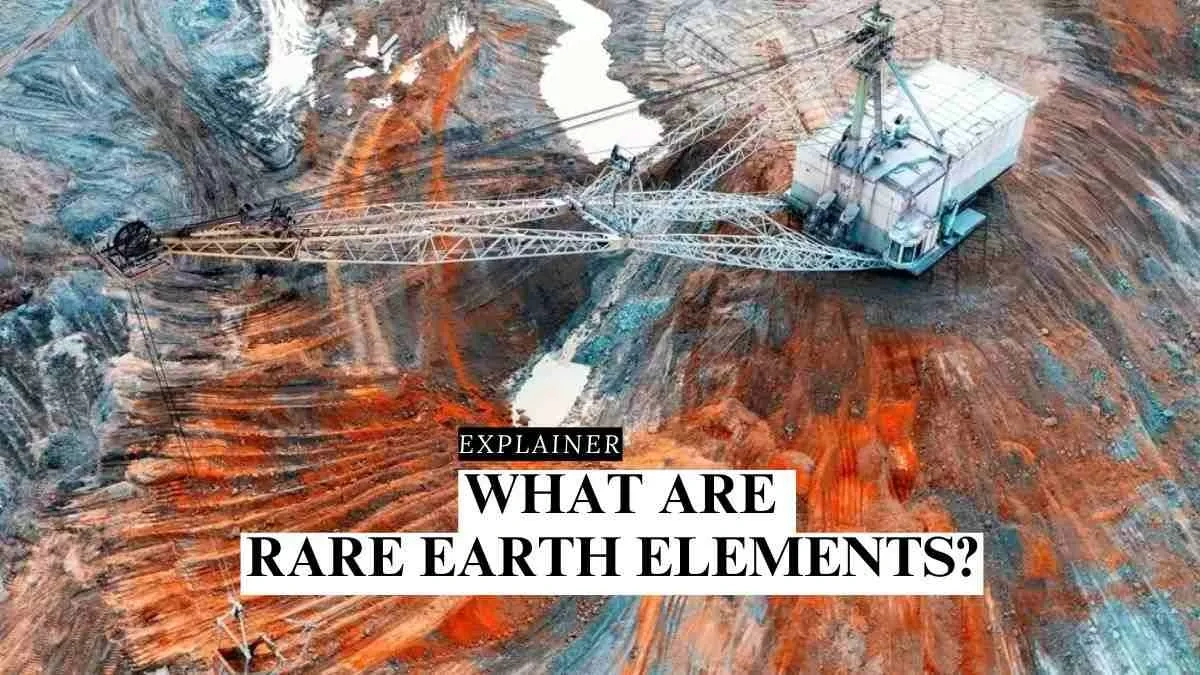So, China’s tightened the reins on rare earths exports and certain technologies. You might be thinking, “Okay, news. So what?” But here’s the thing: this isn’t just another headline. This is a potential tremor in the global economy, particularly for India. Let’s dive into why you should care.
The “Why Now?” Behind China’s Move

Let’s be honest – international trade rarely operates in a vacuum. The timing of this move by China, a dominant player in the rare earth elements market, isn’t coincidental. It’s likely a multifaceted play, driven by a combination of factors. First, there’s the escalating tech war with the US and other Western nations. China might be using its control over these critical materials as leverage. Think of it as a chess move, protecting its own technological advancements by restricting access to key resources. Then, there’s the internal pressure to bolster its own domestic industries. By controlling the outflow of these resources, China can ensure its manufacturers have a competitive edge. Rare earth elements aren’t just commodities; they’re the building blocks of modern technology.
India’s Rare Earths Conundrum | Dependency vs. Opportunity
India, with its booming tech sector and ambitious manufacturing goals, finds itself in a tricky spot. We heavily rely on imports of rare earth minerals , and China has been a major supplier. This new export control policy introduces uncertainty and potential price hikes. But, and it’s a BIG but, it also presents a golden opportunity. This is a chance for India to aggressively develop its own rare earth resources. Now, I initially thought this was all about immediate supply chain disruption, but there is much more to it than meets the eye. There’s a great potential for India to become self-sufficient. Gulf of Mexico related topics can be interesting.
The government’s already pushing for increased exploration and domestic production. Private sector involvement is also crucial. Think about it: a homegrown rare earth industry not only secures our supply chains but also creates jobs and boosts the economy. This could reshape India’s manufacturing landscape. The key is speed and strategic investment. India needs to move quickly to capitalize on this changing global landscape.
Navigating the Tech Transfer Maze
It’s not just about digging stuff out of the ground; it’s also about the tech. The increased scrutiny on technology exports means Indian companies might face hurdles in accessing cutting-edge technologies from China. Areas like semiconductors, electric vehicles, and renewable energy could be affected. The challenge is clear: India needs to accelerate its own technological development and diversify its sources of technology. This calls for strategic partnerships with other countries, increased investment in R&D, and a supportive ecosystem for innovation. What fascinates me is the ripple effect across multiple sectors.
The Geopolitical Chessboard and India’s Strategy
This situation is bigger than just economics; it’s geopolitics at play. China’s move is a reminder that control over critical resources translates to geopolitical influence. India needs to navigate this carefully, balancing its economic interests with its strategic goals. Strengthening ties with countries like Australia (which also has significant rare earth reserves) and diversifying supply chains are crucial steps. It’s also time for India to champion international collaborations and promote a rules-based global trading system. Otherwise, we risk getting caught in the crossfire.
How Can India Seize the Rare Earths Opportunity?
So, what concrete steps can India take? First, aggressive exploration and development of domestic rare earth deposits . Second, incentivizing private sector investment in the entire value chain, from mining to refining to manufacturing. Third, fostering technology transfer and collaboration with like-minded nations. Fourth, creating a strategic stockpile of critical materials to buffer against supply disruptions. And fifth, investing in research and development to find alternative materials and reduce reliance on rare earths. This is not an overnight fix, but it’s a marathon, not a sprint.
Here’s the thing: China’s export controls are a wake-up call. They highlight the vulnerabilities in our supply chains and the importance of strategic self-reliance. But they also present an opportunity for India to emerge as a major player in the global rare earth market and a technological powerhouse. The key is to act decisively, strategically, and with a long-term vision.
This whole scenario will affect international trade dynamics for sure.
FAQ Section
Frequently Asked Questions
What exactly are rare earth elements, and why are they important?
They’re a group of 17 elements crucial for many technologies, including smartphones, EVs, and defense systems.
How dependent is India on China for rare earth minerals?
India relies heavily on China for its rare earth needs, making it vulnerable to supply disruptions.
What steps is the Indian government taking to address this situation?
The government is promoting domestic exploration, incentivizing private sector investment, and seeking international partnerships.
What impact will this have on the prices of electronics and other goods in India?
Potential price increases are possible, especially if supply chains are disrupted and domestic production doesn’t ramp up quickly enough. The stock market has already reacted to this and it is possible that soun stock will be affected as well.
Are there any alternative sources of rare earth minerals for India?
Yes, India can explore partnerships with countries like Australia and diversify its supply chains.
What can Indian companies do to mitigate the risks?
Invest in R&D, seek technology transfer agreements, and diversify their sourcing strategies.




